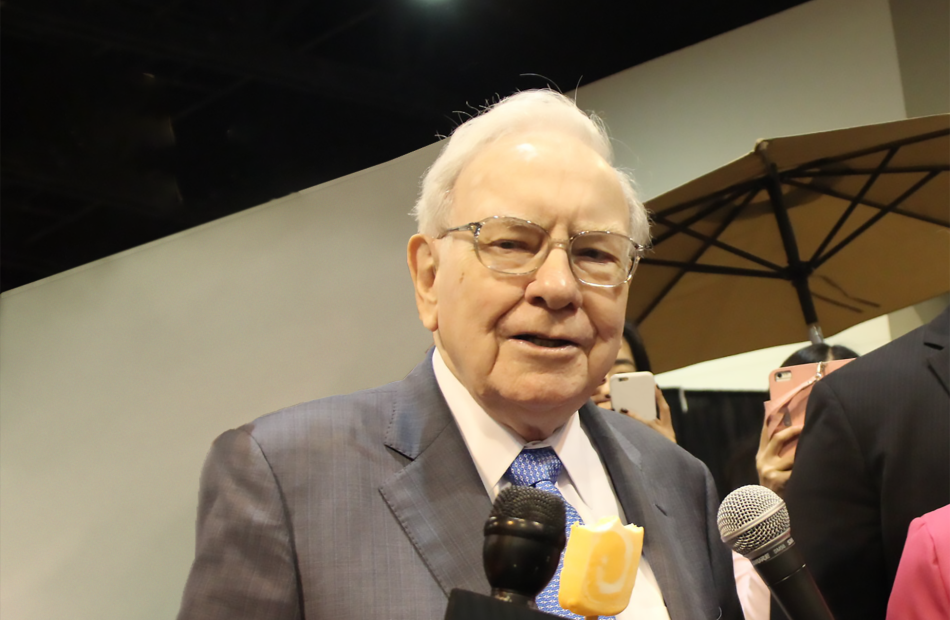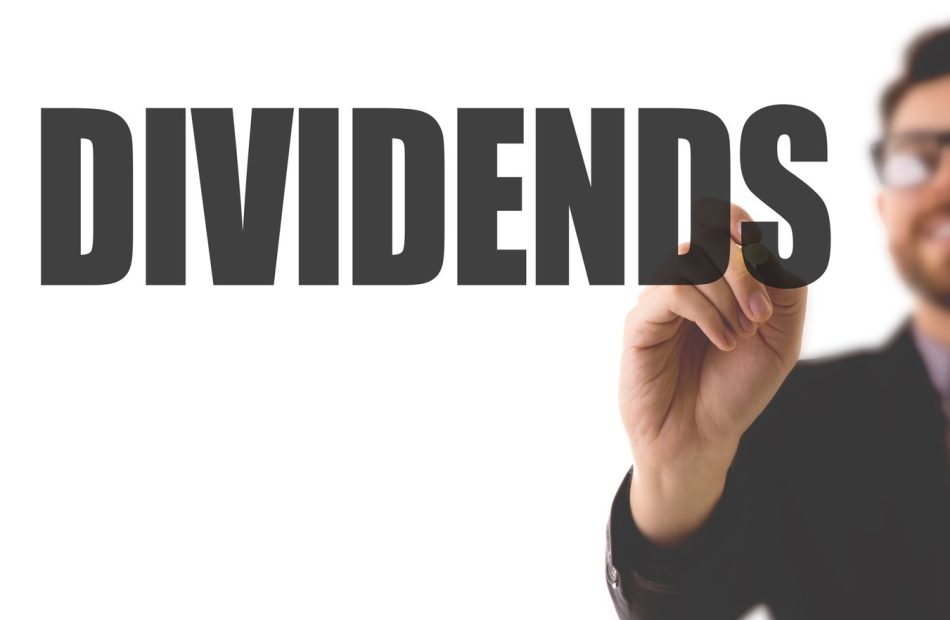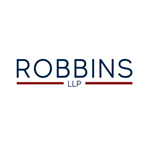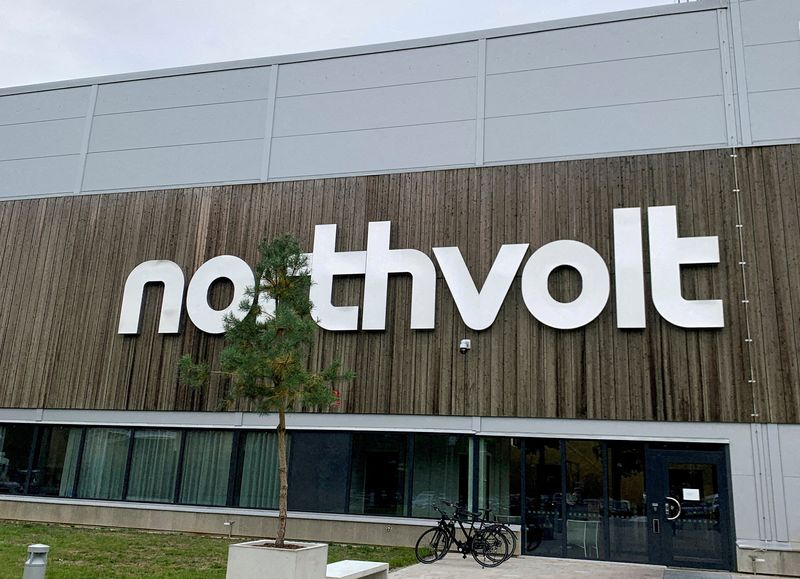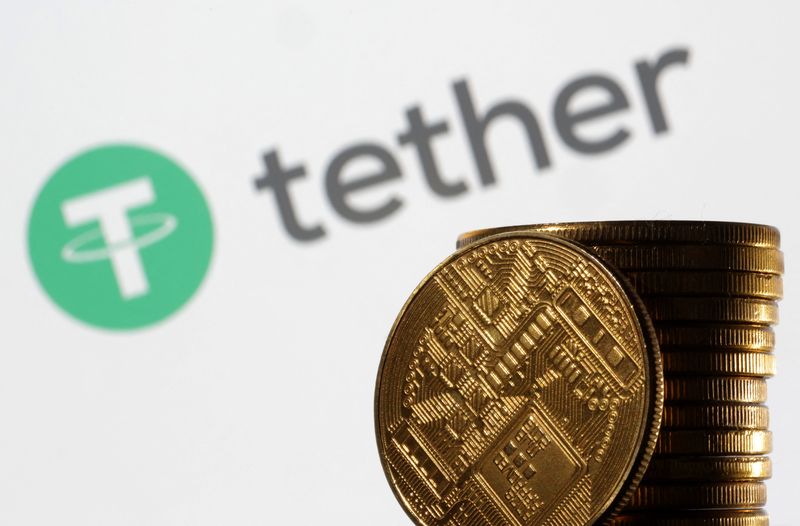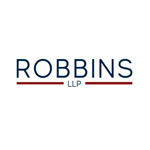Should You Buy Super Micro Computer Stock After Its 1,480% Gain in 5 Years? Wall Street Has a Clear Answer for Investors.
Super Micro Computer (NASDAQ: SMCI) shareholders have been through a whirlwind lately. While the stock is up 1,480% in the last two years, it has also fallen over 70% from its record high in the last eight months. As one of Nvidia‘s largest partners, the server maker should benefit as demand for artificial intelligence (AI) infrastructure increases, but Supermicro has also been accused of accounting manipulation.
Among the 12 analysts who follow the company, the median 12-month price target of $30.50 per share implies an 8% downside from its current share price of $33. That means six analysts think the stock will fall more than 8% in the next year. Additionally, 19 analysts followed Supermicro three months ago, meaning seven have recently discontinued coverage. Wall Street is clearly shying away from the company.
Are You Missing The Morning Scoop? Wake up with Breakfast news in your inbox every market day. Sign Up For Free »
Here are the important details.
Super Micro Computer builds servers, including full server racks equipped with storage and networking that provide customers with a turnkey solution for data center infrastructure. Its internal manufacturing capabilities and “building block” approach to product development let it bring new technologies to market more quickly than its competitors, often by two to six months.
Indeed, earlier this year, Rosenblatt analyst Hans Mosesmann wrote, “Super Micro has developed a model that is very, very quick to market. They usually have the widest portfolio of products when a new product comes out.” Those advantages have helped Supermicro secure a leadership position in AI servers, a market forecast to grow at 30% annually through 2033, according to Statista.
Importantly, Supermicro is also the top supplier of direct liquid cooling (DLC) systems, which could help the company strengthen its position in AI servers. DLC systems reduce data center power consumption by 40% and occupy 80% less space than traditional air-cooled systems. AI servers generate more heat than general-purpose servers, so demand for DLC systems is expected to rise quickly.
Indeed, while less than 1% of data centers have historically used liquid cooling, Supermicro estimates 15% (and maybe as many as 30%) of new data center installations will use liquid cooling in the next two years, and the company says it is positioned to “capture the majority share of that growth.”
As mentioned, while Supermicro shares are up 1,480% in the last two years, the stock has also nosedived more than 70% from its record high in the last eight months. Below is a month-by-month timeline detailing the events that led to that rapid decline in value.
Should You Buy This Top Cathie Wood Stock While It's Below $100?
The average investor can easily find new investment ideas by following well-known asset managers. One of those managers is Cathie Wood, who heads up Ark Invest, an investment fund that focuses on disruptive and innovative businesses.
In the Ark Innovation ETF, the flagship product that the asset manager offers to clients, fintech enterprise Block (NYSE: SQ) is a top holding. As of Nov. 21, it’s the eighth largest position.
Are You Missing The Morning Scoop? Wake up with Breakfast news in your inbox every market day. Sign Up For Free »
Should you buy this top Cathie Wood stock while it trades below $100 per share?
Cathie Wood and her team at Ark Invest are bullish on numerous technological trends. One of the areas the investment manager is optimistic about is the fintech industry. In particular, the excitement relates to how companies are offering holistic solutions to customers for all their financial services needs.
Block falls squarely into this investment theme. Ark Invest believes that in the future, the business’ vertically integrated offerings, like digital wallets, bank accounts, and debit cards for consumers, and payroll, working capital, and bill pay for merchants, will result in a powerful and more widely used closed-loop payments system. Block is at the forefront of this trend.
Indicative of how much Ark Invest is bullish on the fintech niche, the firm offers the Ark Fintech Innovation ETF, which primarily focuses on these types of businesses. Block is the third largest holding in that fund, making up 6.3% of the assets.
Investors probably appreciate Block’s growth potential. Through the first nine months of 2024, the company reported a 20% year-over-year increase in gross profit. Both of the critical segments, Square and Cash App, saw double-digit gains with this key performance metric.
On the merchant side, Square processed $59.9 billion in gross payment volume in the three-month period that ended Sept. 30. The segment continues to attract larger sellers.
On the consumer side, Cash App now has 57 million monthly active users. Management continues to drive further adoption of the Cash App Card, which can boost spending activity and, ultimately, the revenue and gross profit that Block generates.
Like many other tech-enabled companies in recent years, Block has made an effort to streamline its operations and drive greater efficiencies. We’re seeing this play out right before our eyes.
The business posted $323 million in operating income in the third quarter. That’s a massive reversal from the $10 million operating loss reported in the year-ago period. The leadership team upped their full-year 2024 guidance, which now calls for an adjusted operating margin of 18%.
Warren Buffett Owns 6 High-Yield Dividend Stocks. Here's the Best of the Bunch.
Warren Buffett is a lot of things, but an income investor isn’t one of them. The multibillionaire doesn’t need extra income. Neither does Berkshire Hathaway, which boasts the eighth-largest market cap of any U.S. company.
However, Buffett does like dividend stocks. Berkshire Hathaway’s portfolio even includes six high-yield dividend stocks (with a high yield defined as one that’s at least twice that of the S&P 500.)
Are You Missing The Morning Scoop? Breakfast News delivers it all in a quick, Foolish, and free daily newsletter. Sign Up For Free »
Let’s go down the list of Buffett’s high-yield six-pack, from highest to lowest forward dividend yield. Kraft Heinz ranks at the top, with a yield of 5.23%. Berkshire owns so much of the food company that it’s listed among the conglomerate’s subsidiaries on its website.
Chevron (NYSE: CVX) takes the No. 2 spot. The oil and gas giant pays a forward dividend yield of 4.09%. It’s also Berkshire’s fifth-largest holding.
Diageo trails behind Chevron, with a yield of 3.47%. The British alcoholic beverage maker is one of Berkshire’s smallest positions, making up less than 0.1% of its total portfolio.
Next up is Ally Financial (NYSE: ALLY). The bank’s forward dividend yield is 3.37%. Buffett initiated a position in Ally in the first quarter of 2022.
Holding down the sixth position is another bank — Citigroup (NYSE: C). The financial services company offers a forward dividend yield of 3.27%. Like Ally, Buffett first bought Citigroup in early 2022.
Coca-Cola (NYSE: KO) is the caboose on our list, with a yield of 3.1%. However, the large food and beverage company is No. 1 in another key category as the stock Buffett has owned for the longest period.
We’ve seen how these six stocks stack up against each other with dividend yields. How do they compare on other fronts?
Coca-Cola boasts the most impressive dividend track record. The company has increased its dividend for 62 consecutive years, making it a part of the elite group of stocks known as Dividend Kings. Chevron has a great track record as well, with 37 consecutive years of dividend increases.
The high-yield bank stocks stand out based on valuation. Ally Financial sports a low forward price-to-earnings ratio of 7.9. Citigroup’s forward earnings multiple is around 9.4. However, Kraft Heinz isn’t too much higher, with shares trading at roughly 9.8 times forward earnings.
Ally and Citigroup also could have the best growth prospects over the near term if Wall Street is right. The average earnings growth projection for Ally next year is 48.9%, based on LSEG‘s survey of analysts. The consensus earnings growth for Citigroup next year is nearly 22.1%. Chevron comes in third place in this category, with analysts forecasting 9.2% earnings growth.
The Smartest High-Yield Oil Stock to Invest $500 in Right Now
Over the past year, the price of Brent Crude, a key global oil benchmark, has been as low as $70.31 and as high as $93.12. Over the past three years, the swing from peak to trough was even greater, with the low at $69.53 and the high at a whopping $133.18. Talk about a roller-coaster ride! This is why the smartest oil stock for most investors right now will be reliable industry giant Chevron (NYSE: CVX).
Before getting into Chevron’s business, it is worth looking at one of the biggest benefits investors get from owning the stock: its dividend. The dividend yield is around 4% right now, which is notably above the energy industry average of 3.3% and the S&P 500‘s average of 1.2%. The dividend backing that high yield has been increased annually for 37 consecutive years. Note that this includes hikes when oil was trading at $133 and when it was trading at $69, or lower.
Are You Missing The Morning Scoop? Wake up with Breakfast news in your inbox every market day. Sign Up For Free »
Those dividend stats alone prove just how reliable a company Chevron is. And, in fact, that might be enough to get long-term dividend investors to buy this oil giant. But there’s more to like here than just the yield. That’s where the business comes in.
Chevron is what’s known as an integrated energy company, which means it has operations across the energy sector. That includes energy production (the upstream), energy transportation (the midstream), and chemicals and refining (the downstream). Each of these segments operates a little differently, and having all three in the portfolio helps to soften the peaks and valleys inherent to the commodity driven energy sector. It’s also worth noting that 75% of Chevron’s oil investments have a break-even point that is below $50 per barrel, which gives it a lot of operational leeway.
On top of that, Chevron has an investment-grade-rated balance sheet. That alone, however, doesn’t do justice to the importance of the company’s financial strength.
Chevron has been around a very long time and is well aware of the volatility of the sector in which it operates. That’s why it has created a diversified business, so it can better weather the inherent ups and downs it will face. But the real key to the company’s ability to continue rewarding investors with dividend increases — even when oil prices swing wildly — is its balance sheet.
When times are good, Chevron keeps its leverage low. Right now the company’s debt-to-equity ratio, a measure of leverage, is around 0.17 times. It is one of the lowest levels of leverage among the company’s closest integrated energy peers. The company is, basically, preparing for what it knows is coming: another oil downturn. Management doesn’t know exactly when, but it knows very well that the industry is volatile and lower oil prices are almost certain to arrive eventually.
Xerox Holdings Corporation Shareholder Alert: Robbins LLP Reminds Investors of the XRX Securities Class Action
SAN DIEGO, Nov. 24, 2024 (GLOBE NEWSWIRE) —
Robbins LLP reminds investors that a class action was filed on behalf of all persons and entities that purchased or otherwise acquired Xerox Holdings Corporation XRX securities between January 25, 2024 and October 28, 2024. Xerox and its subsidiaries offer workplace technology that integrates hardware, services, and software for enterprises in the Americas, and internationally.
For more information, submit a form, email attorney Aaron Dumas, Jr., or give us a call at (800) 350-6003.
The Allegations: Robbins LLP is Investigating Allegations that Xerox Holdings Corporation (XRX) Misled Investors Regarding its Business Prospects
According to the complaint, during the class period, defendants failed to disclose to investors that: (1) after a large workforce reduction, the Company’s salesforce was reorganized with new territory assignments and account coverage; (2) as a result, the Company’s salesforce productivity was disrupted; (3) as a result, the Company had a lower rate of sell-through of older products; (4) the difficulties in flushing out older product would delay the launch of key products; and (5) therefore, Xerox was likely to experience lower sales and revenue.
Plaintiff alleges that on October 29, 2024, Xerox revealed “lower-than-expected improvements in sales force productivity” and “delays in the global launch of two new products” had led to “sales underperformance.” The Company disclosed that for third quarter 2024, quarterly revenue was down 7.5% year-over-year to $1.53 billion, net loss fell to -$1.2 billion (down $1.3 billion year-over-year), and equipment sales declined 12.2% year over year to $339 million. In a corresponding earnings call, the Company’s COO revealed the product delay was in fact a “forecasting issue” where the Company “had higher expectations that we were going to flush through the older product” which it needed to “sell through” in order to “make those transitions.” On this news, the Company’s share price fell $1.79, or 17.41%, to close at $8.49 per share on October 29, 2024.
What Now: You may be eligible to participate in the class action against Xerox Holdings Corporation. Shareholders who want to serve as lead plaintiff for the class must submit their application to the court by January 21, 2025. A lead plaintiff is a representative party who acts on behalf of other class members in directing the litigation. You do not have to participate in the case to be eligible for a recovery. If you choose to take no action, you can remain an absent class member. For more information, click here.
All representation is on a contingency fee basis. Shareholders pay no fees or expenses.
About Robbins LLP: Some law firms issuing releases about this matter do not actually litigate securities class actions; Robbins LLP does. A recognized leader in shareholder rights litigation, the attorneys and staff of Robbins LLP have been dedicated to helping shareholders recover losses, improve corporate governance structures, and hold company executives accountable for their wrongdoing since 2002. Since our inception, we have obtained over $1 billion for shareholders.
To be notified if a class action against Xerox Holdings Corporation settles or to receive free alerts when corporate executives engage in wrongdoing, sign up for Stock Watch today.
Attorney Advertising. Past results do not guarantee a similar outcome.
A photo accompanying this announcement is available at https://www.globenewswire.com/NewsRoom/AttachmentNg/513fb6e4-a34e-4150-8fe5-2c133087d380

Market News and Data brought to you by Benzinga APIs
© 2024 Benzinga.com. Benzinga does not provide investment advice. All rights reserved.
Could Serve Robotics Become the Next Nvidia?
Nvidia‘s (NASDAQ: NVDA) stock soared 2,630% over the past five years, boosting its market cap to roughly $3.5 trillion and making it the most valuable company in the world. Most of that rally was driven by its brisk sales of AI-oriented GPUs for data centers.
From fiscal 2019 to fiscal 2024 (which ended this January), Nvidia’s revenue grew at a compound annual growth rate (CAGR) of 39%. But from fiscal 2024 to fiscal 2027, analysts expect its revenue to rise at an even faster CAGR of 53% as the AI market continues to expand.
Are You Missing The Morning Scoop? Breakfast News delivers it all in a quick, Foolish, and free daily newsletter. Sign Up For Free »
That secular trend makes Nvidia a great long-term investment, but it could struggle to replicate its millionaire-making gains from the past several years. So if you’re looking for the “next Nvidia,” you might want to check out the smaller AI companies the chipmaker is investing in.
One of those companies that stands out is Serve Robotics (NASDAQ: SERV), a producer of AI-powered sidewalk delivery robots. Let’s see if this little $384 million company could eventually become a trillion-dollar tech giant like Nvidia.
Serve Robotics was founded in 2017 within Postmates, the food delivery service acquired by Uber Technologies (NYSE: UBER) and integrated into Uber Eats in 2020. Uber subsequently spun off Serve Robotics as an independent company in 2021, but it continued using its delivery robots to fulfill orders in select areas across Los Angeles. Its newest Gen 3 robots can travel 48 miles on a single charge, carry up to 15 gallons of cargo, and have a max speed of 11 mph. They’re also resistant to extreme temperatures and heavy rain.
Serve Robotics executed a reverse merger with the blank-check company Patricia Acquisition in 2023, which paved the way to its Nasdaq listing at $4 a share on April 18. But it ended the first day at just $3.11 and sank below $3 by the end of its first month.
Today, Serve’s stock trades at nearly $9. Most of that rally occurred this July after Nvidia revealed that it had taken a 10% stake in the company. That vote of confidence brought back a lot of bulls, even though the company still barely generates any revenue.
Serve owns a fleet of 100 robots, but it only operated 59 active robots in the L.A. area for Uber Eats in the third quarter of 2024. It generated just $1.6 million in revenue in the first nine months of 2024 as it racked up a net loss of $26.1 million.
Goldman funds to take $900 million hit on Northvolt, FT reports
(Reuters) – Funds managed by Goldman Sachs will write off nearly $900 million after Swedish lithium-ion battery producer Northvolt filed for Chapter 11 bankruptcy earlier this week, Britain’s Financial Times reported on Saturday.
The Goldman private equity funds, which together ranked as the second-largest shareholders in Northvolt, plan to write down their $896 million investment to zero by year end, the report said, citing letters to investors seen by the FT.
“While we are one of many investors disappointed by this outcome, this was a minority investment through highly diversified funds. Our portfolios have concentration limits to mitigate risks,” Goldman said in a statement.
Northvolt did not immediately respond to a Reuters request for comment.
The group went in a matter of months this year from being Europe’s best shot in a vital industry for the energy transition to racing to stay afloat, hobbled by production problems and dwindling funds.
Northvolt’s CEO and co-founder Peter Carlsson stepped down on Friday, a day after the company filed for U.S. Chapter 11 bankruptcy protection.
In November 2019 the company had completed its $1 billion equity capital raising, aimed at funding its plans to build Europe’s biggest lithium-ion battery plant, led by Germany’s Volkswagen and Goldman.
(Reporting by Surbhi Misra in Bengaluru; Editing by David Holmes)
Trump pick Lutnick's firm in talks with Tether for $2 billion bitcoin lending project, Bloomberg reports
(Reuters) – U.S. President-elect Donald Trump’s pick for Commerce Secretary, Howard Lutnick is in talks to deepen his financial ties with the company operating the world’s largest stablecoin, Tether, by launching a $2 billion project to lend dollars to clients against bitcoin, Bloomberg News reported on Sunday.
Lutnick’s financial services firm Cantor Fitzgerald is discussing receiving support from Tether to help fund the project, that could potentially reach tens of billions of dollars, the report said, citing people familiar with the matter.
Tether and Cantor did not immediately respond to a Reuters request for comment outside business hours.
Tether uses Cantor to hold billions of dollars worth of Treasuries that support the value of its stablecoin in a relationship that helps Lutnick’s firm earn tens of millions of dollars annually, Bloomberg reported.
Earlier this week, Trump said he would nominate Wall Street CEO Howard Lutnick to lead his trade and tariff strategy as head of the Commerce Department. He would also have “additional direct responsibility” for the U.S. Trade Representative’s office.
Lutnick has been known to promote the adoption of cryptocurrency. The Commerce Department oversees a sprawling array of functions with nearly 47,000 employees, from the U.S. Census Bureau to weather forecasting, ocean navigation and investment promotion.
(Reporting by Kanjyik Ghosh;Editing by Elaine Hardcastle)
Humacyte, Inc. Shareholder Alert: Robbins LLP Reminds Investors of the HUMA Securities Class Action
SAN DIEGO, Nov. 24, 2024 (GLOBE NEWSWIRE) — Robbins LLP reminds investors that a class action was filed on behalf of all persons and entities that purchased or otherwise acquired Humacyte, Inc. HUMA securities between May 10, 2024 and October 17, 2024. Humacyte and its consolidated subsidiaries develop and manufacture off-the-shelf, implantable, and bioengineered human tissues.
For more information, submit a form, email attorney Aaron Dumas, Jr., or give us a call at (800) 350-6003.
The Allegations: Robbins LLP is Investigating Allegations that Humacyte, Inc (HUMA) Misled Investors Regarding its Manufacturing Practices
According to the complaint, Humacyte is currently engaged in engineering and manufacturing Acellular Tissue Engineered Vessel (“ATEV”), also known as “Human Acellular Vessel,” which is a lab-grown blood vessel implant that can act as a replacement for an injured or damaged blood vessel. On August 9, 2024, Humacyte issued a press release announcing that the FDA “will require additional time to complete its review of its Biologic License Application (BLA) for the acellular tissue engineered vessel (ATEV) in the vascular trauma indication.” The press release disclosed in part, that, “[d]uring the course of the BLA review, the FDA has conducted inspections of our manufacturing facilities and clinical sites and has actively engaged with us in multiple discussions regarding our BLA filing[.]” On this news, the Company’s stock price declined $1.29, or 16.4%, to close at $6.62 per share on August 12, 2024. The complaint further alleges that on October 17, 2024, the FDA released a Form 483 concerning Humacyte’s Durham, North Carolina facility, which revealed violations, including “no microbial quality assurance,” “no microbial testing,” and inadequate “quality oversight.” On this news, the Company’s stock price declined $0.95, or 16.35%, to close at $4.86 per share on October 17, 2024.
Plaintiff alleges that during the class period, defendants failed to disclose to investors: (1) that the Company’s Durham, North Carolina facility failed to comply with good manufacturing practices, including quality assurance and microbial testing; (2) that the FDA’s review of the BLA would be delayed while Humacyte remediated these deficiencies; and (3) that, as a result, there was a substantial risk to FDA approval of ATEV for vascular trauma.
What Now: You may be eligible to participate in the class action against Humacyte, Inc. Shareholders who want to serve as lead plaintiff for the class must submit their application to the court by January 17, 2025. A lead plaintiff is a representative party who acts on behalf of other class members in directing the litigation. You do not have to participate in the case to be eligible for a recovery. If you choose to take no action, you can remain an absent class member. For more information, click here.
All representation is on a contingency fee basis. Shareholders pay no fees or expenses.
About Robbins LLP: Some law firms issuing releases about this matter do not actually litigate securities class actions; Robbins LLP does. A recognized leader in shareholder rights litigation, the attorneys and staff of Robbins LLP have been dedicated to helping shareholders recover losses, improve corporate governance structures, and hold company executives accountable for their wrongdoing since 2002. Since our inception, we have obtained over $1 billion for shareholders.
To be notified if a class action against Humacyte, Inc. settles or to receive free alerts when corporate executives engage in wrongdoing, sign up for Stock Watch today.
Attorney Advertising. Past results do not guarantee a similar outcome.
A photo accompanying this announcement is available at:
https://www.globenewswire.com/NewsRoom/AttachmentNg/5aec8844-e33a-43a5-9df0-319cc31cc1d4

Market News and Data brought to you by Benzinga APIs
© 2024 Benzinga.com. Benzinga does not provide investment advice. All rights reserved.
We're a High-Income Household. Can We Shield Ourselves from Future Taxes Using a Backdoor Roth?
SmartAsset and Yahoo Finance LLC may earn commission or revenue through links in the content below.
A backdoor Roth conversion can save you significantly in future taxes, but at the cost of paying those taxes now. This isn’t always a good deal in the long run.
For example, perhaps you’re married with a combined income of $400,000 per year, putting you and your spouse well above the income limits for contributing to a Roth IRA. However, you can still build an after-tax retirement account by contributing to a traditional IRA and then converting it to a Roth account. This strategy, known as the backdoor Roth IRA, will lead to tax-free withdrawals in retirement but higher income taxes in the years in which the conversions are made.
If you’re considering a backdoor Roth IRA or other strategies to save on taxes, consider talking it over with a financial advisor.
A Roth IRA is a retirement account that’s funded with after-tax contributions. This means that you don’t get any special tax breaks on the money that you contribute. You instead pay taxes on the money up front, before it goes into the account, in exchange for tax-free growth from then on.
This can make Roth portfolios extremely valuable under the right circumstances. For example, say that you contribute $100 to your Roth IRA and it grows to $1,000 by the time you retire. You would have paid taxes on the $100 contribution in exchange for $900 worth of tax-free gains. This is especially the case for someone who expects to be in a higher tax bracket in retirement.
However, the IRS has strict contribution and income limits for Roth IRAs. Annual contributions are capped at $7,000 in 2024 ($8,000 for people 50 and older) – significantly less than the $23,000 you can save in a 401(k) or similar account. These annual limits apply to all IRAs, meaning you can only contribute up to a combined $7,000 in 2024 to your IRAs, regardless of how many traditional and Roth accounts you own.
Roth IRAs also have income limits. In 2024, if your modified adjusted gross income (MAGI) is below $146,000 as an single filer or $230,000 as a married couple filing jointly, you may contribute up to $7,000. However, single filers with a MAGI between $146,000 and $161,000 and married couples with a MAGI between $230,000 and $240,000 can only make a partial Roth contribution. Households earning more than these caps lose the ability to contribute to a Roth IRA altogether.
Consider speaking with a financial advisor if you need guidance on strategically spreading your retirement savings across traditional and Roth IRAs.



